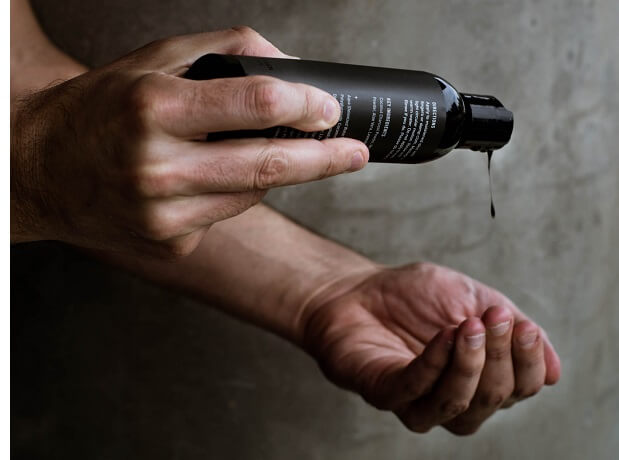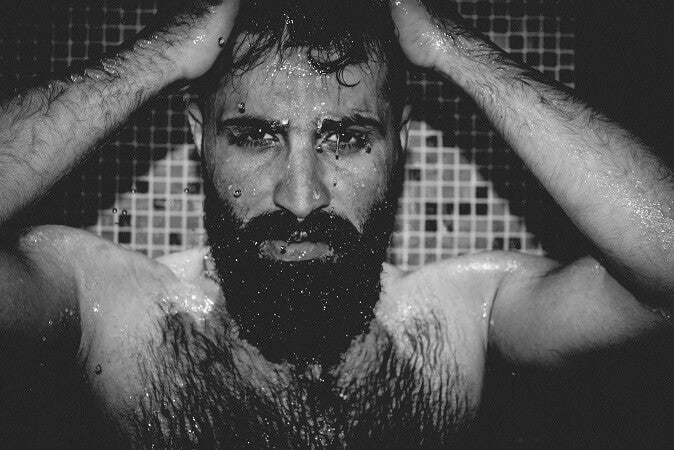The Ultimate Guide to Shaving Your Chest Hair: Expert Tips for a Smooth and Flawless Chest

In today’s grooming-conscious world, manscaping has become an essential part of personal care. Whether you prefer a completely smooth chest or just want to tame unruly hair, shaving your chest and stomach hair can enhance your appearance and boost confidence. Proper grooming of these areas is crucial for achieving a clean look. However, achieving a flawless shave requires the right technique, tools, and aftercare. This guide will walk you through everything you need to know about chest and stomach hair shaving while ensuring a comfortable and irritation-free experience.
Understanding Chest Hair
Why Shave Your Chest Hair?
Men shave their chest hair for various reasons, including:
- Aesthetic appeal – A smooth chest can enhance muscle definition and create a clean look.
- Comfort – Excessive chest hair can cause itching, sweating, and discomfort, especially in warm weather or during workouts.
- Hygiene – Shaving can reduce body odor by minimizing sweat and bacteria buildup.
- Personal preference – Some men (and their partners) simply prefer the feel of a smooth chest.
- Chest hair styles – Exploring different chest hair styles can enhance a man's physique and personal style. Various lengths and patterns can be groomed to achieve the desired look, using specific techniques and products.
Preparation is Key
A proper pre-shave routine ensures a smooth and irritation-free experience:
✔️ Trim First – If you have long chest hair, use an electric trimmer to shorten it before shaving. This prevents razor clogging and ensures a closer shave. Utilize comb attachments to select the appropriate comb length for trimming chest hair, which helps achieve a natural look and makes the trimming process more effective.
✔️ Exfoliate – Use a body scrub or exfoliating mitt to remove dead skin cells and help prevent ingrown hairs.
✔️ Warm Up Your Skin – Take a warm shower or apply a hot towel to soften the hair and open pores for a smoother shave.
Choosing the Right Tools for the Job
Your choice of grooming tools can make or break your shaving experience. Here’s what you need:
🪒 Razors: Opt for a multi-blade cartridge razor or a safety razor designed for sensitive skin. Electric body groomers can also be a great alternative for quick trims.
🧴 Shaving Cream or Gel: A high-quality shaving cream creates a protective barrier, allowing the razor to glide smoothly and minimize irritation. Shaving gel, in particular, softens hair and reduces irritation, enhancing the smoothness of the shave.
💧 Aftershave Balm or Lotion: Choose an alcohol-free aftershave with soothing ingredients like aloe vera to hydrate and protect your skin.
🔗 Get the best grooming essentials from MyManFur – premium-quality razors, shaving creams, and skin-soothing aftershaves for the ultimate manscaping experience.
Mastering the Shaving Technique for Shaving Chest Hair
Follow these steps for a close, smooth shave without irritation:
1️⃣ Apply shaving cream evenly across your chest.
2️⃣ Shave in the direction of hair growth to minimize irritation and ingrown hairs.
3️⃣ Use short, gentle strokes, rinsing the razor frequently to prevent clogging.
4️⃣ For a closer shave, carefully go against the grain – but proceed with caution to avoid razor burn.
5️⃣ Rinse with cool water to close the pores and reduce inflammation.
6️⃣ Aftercare for a shaved chest is crucial. Start by rinsing thoroughly to remove any remaining shaving cream. Exfoliate gently to prevent ingrown hairs and then moisturize to keep the skin hydrated and smooth. This helps maintain skin health and reduces itching or irritation.
7️⃣ Apply an alcohol-free aftershave balm to soothe and hydrate your skin.
Dos and Don’ts of Chest Shaving
✔️ DO replace your razor blades regularly for a clean, sharp shave.
✔️ DO moisturize daily to prevent dryness and irritation.
✔️ DO exfoliate weekly to prevent ingrown hairs and keep skin smooth.
✔️ DO consider an electric trimmer for maintenance between shaves.
✔️ DO groom your stomach hair to ensure a seamless look between your chest and stomach, avoiding an unkempt appearance.
❌ DON’T shave over irritated or broken skin to avoid infections.
❌ DON’T use dull razors, as they increase the risk of nicks and irritation.
❌ DON’T rush – take your time to ensure a smooth, nick-free shave.

Post-Shave Care & Maintenance for Chest Hair
A well-groomed chest requires proper aftercare:
🧴 Moisturize daily with a fragrance-free lotion to keep skin hydrated.
🧼 Exfoliate 1-2 times per week to prevent ingrown hairs.
☀️ Apply sunscreen if exposing your chest to the sun to prevent irritation and burns.
Before shaving, it's important to trim chest hair to manage longer hairs and achieve a neat appearance. Using specialized trimmers, such as Braun's all-in-one options and various comb attachments, can simplify the grooming process and ensure a more even shave.
Find the Right Hair Removal Creams for a Smooth Chest
Shaving your chest can be a confidence-boosting experience when done correctly. You can achieve a clean, irritation-free look using high-quality tools and following a proper technique.
💡 Upgrade your grooming routine with top-rated shaving essentials from MyManFur. Whether you need razors, shaving creams, or aftershave solutions, we’ve got you covered for the ultimate manscaping experience.
Alternative Hair Removal Methods for Body Hair
While shaving and trimming are popular methods for removing chest hair, several alternative techniques can help you achieve a smooth, hair-free chest:
- Waxing: This method involves applying hot wax to the skin and then removing it with a cloth strip, pulling the hair out from the root. Although waxing can be painful and may cause redness and irritation, it provides a smooth, hair-free chest for several weeks.
- Hair Removal Creams: These creams work by dissolving the hair at the skin’s surface, making it easy to wipe away. While convenient, they may not be as effective for coarse or curly hair and can sometimes cause skin irritation or allergic reactions.
- Sugaring: Similar to waxing, sugaring uses a sugar-based paste to remove hair. This method can be less painful and may cause less irritation than traditional waxing.
- Threading: This technique involves using a thread to remove hair from the root. While effective for small areas, threading may not be practical for larger sections of the chest.
Exploring these alternative methods can help you find the best solution for your body grooming needs.
FAQs on Chest Hair Removal
Q: What is the best way to remove chest hair?
A: The best way to remove chest hair depends on personal preference and skin type. Shaving and trimming are popular methods, but alternative techniques such as waxing, sugaring, and threading can also be effective.
Q: How often should I shave my chest hair?
A: The frequency of shaving chest hair depends on your hair growth rate and personal preference. Some men prefer to shave daily, while others may only need to shave every few days.
Q: Can I use hair removal creams on my chest?
A: Yes, hair removal creams can be used on the chest, but they may not be as effective for coarse or curly hair. It’s important to follow the instructions carefully and perform a patch test before using the cream on a large area.
Q: How can I prevent ingrown hairs when shaving my chest?
A: Exfoliating regularly, using a sharp razor, and shaving in the direction of hair growth can help prevent ingrown hairs. Additionally, moisturizing the skin after shaving can soothe and hydrate it.
Q: Can I use the same razor for shaving my face and chest?
A: It’s generally recommended to use separate razors for the face and body to maintain hygiene and prevent the transfer of bacteria.
By understanding these FAQs, you can make informed decisions about your chest hair removal routine and achieve the best results for your skin type and personal preferences.



